forwarded from http://www.home-style-choices.com/home-lighting-design.html
How To Best Light Your Home
You don’t need to be an expert on home lighting design to adequately light your home but getting some of the basic tenets under your belt certainly helps.
Filling your home with light can be accomplished in a variety of ways and like anything else, can be done well or poorly. If you’ve ever been in a space with a poor lighting design you’ll understand the difference.
Good lighting stems from good design concepts that involve the right kind of lighting, congruency with how the space will be used and consideration of lighting controls. In other words, good home lighting design involves more than just the lights you choose. Sticking a few lamps in a room might keep you from bumping into things but there’s a whole lot more that you can do with lighting.
One of the keys is understanding the kinds of lighting sources that are available and how they’re put to best use. New technologies like LED lighting offer great ways to “green up” your home’s lighting by saving energy and saving you some money on utility bills.
Even if you leave the task of designing the lighting for your new home or remodel to a designer or your contractor, it pays to understand the basic concepts. That way you’ll be better able to make informed choices and decisions on how to light your space.
Where To Start – Understand The Basics
Tackling a broad subject like home lighting design might seem a bit intimidating but you don’t have to become a lighting designer to achieve good results in your home. Understanding the basic principles of lighting and how it’s used effectively will get you off on the right foot.
The Basic Concepts Of Home Lighting
There are several concepts of light and lighting design that will give you a good foundation for making the right lighting decisions for your home.
Using “Layers” Of Light
Lighting professionals often use the term “layering” when referring to lighting design. In more practical terms, you can view light layers as describing the different functional categories of light: Ambient, Task, Accent and Decorative.
Knowing the effects these layers have and how they can be used will help you achieve a balanced and effective lighting plan.
Publisher’s Comments
This is probably a good time to define some terms so you don’t get confused as you read on.
In the lighting industry the term “lamp“ is used to express what you and I know as a light bulb, the source of the light. The fixtures, (the things that hold the light bulbs, some of the which we’d call “lamps”) are called “luminaires”.
Why the stuffy, counterintuitive, confusing language? Who knows. However, to be consistent with the lighting professionals, I’ll use the term “lamp” to refer to light bulbs in the rest of the information below.
- Ambient lightrefers to the general fill light that is necessary to function in a space. It’s source can be from any one or more of the various types of lighting – by “types” we mean the various physical lighting fixtures that are available like recessed cans, track lighting, etc.
- Task lighting is used in areas where specific tasks are performed with the main purpose of providing illumination for those functions. Examples include lighting over the sink for doing dishes, under the cabinets for preparing meals on the countertop and next to an easy chair for the purpose of reading.
- Accent lighting is used to highlight certain features or elements within a space. Examples include using a downlight to highlight framed portraits on the wall or to accentuate the texture of a stone hearth.
- Decorative lighting refers to the lighting fixtures themselves rather than the what the light is being used for. In this case, the light fixture is the focus of attention and not necessarily what it’s intended to illuminate. One example is a chandelier that’s designed with aesthetic qualities that make it part of the decorative landscape of a room.
The key point about layers of light is that most successful home lighting plans use more than one layer. Lighting designers advocate using several because they enhance the feel of the room, offer flexibility in setting mood and generally make for better illumination for how the space is used.

In the picture above, notice the three different layers of light that are used. Lighting pendants over the island and under-cabinet lighting are used as task lights while the recessed lighting in the ceiling offers ambient light.
One thing to keep in mind is that these various lighting functions can also serve more than one purpose. Task lighting like the under-cabinet lights can also serve as ambient lighting for a subdued mood when the rest of the lights are off.
Sources Of Light (Types Of Lamps)
There are three basic types of lamps used in home lighting design.

- Incandescent - Incandescent lamps generate their light by heating a filament (wire). Most of the energy used is given off as heat which makes basic incandescents very inefficient. Halogen and Xenon lamps are forms of incandescent lamps but they contain halogen or xenon gas to preserve the filament and the life of the lamp.
Replace Incandescent by LED Lamp Bulb E27
Color Rendering & Temperature
Two important characteristics of light involve it’s Color Rendering Index and Color Temperature.
- Color Temperature - Color temperature relates to the hue (color shade) of the light that we see. It’s described by the terms “warm” and “cool”. Warm light gives off a yellowish cast whereas cool lighting has a bluish tint.
Color temperature is measured in degrees Kelvin, with warmer colors having a lower number than cool colors (yes, it’s counterintuitive). For example, candlelight is about 1800 degrees Kelvin whereas noon-time sunlight has a color temperature of about 5500 degrees Kelvin. By the way, the term “temperature” has nothing to do with the perceived physical temperature of the light source. Rather, it’s derived from the scientific method used to designate the various color shades within the spectrum.
The important point with regard to color temperature is that it describes the color shade, however subtle, of the light emanating from a lamp (light source). Lamps (bulbs) with lower color temperatures will have a warmer tone than lights with higher color temperatures.
- Color Rendering Index (CRI) - The CRI is a measurement scale that indicates a light’s ability to render the trueness of colors, as they would appear in natural sunlight. The scale runs from 0 to 100, with 100 being the best.
Use lamps (remember, we’re talking about “light bulbs” here) that have a CRI of 80 or greater for the best representation of colors. Incandescent and halogen lamps typically have the best or a very high CRI. Fluorescents will vary but all Energy Star rated compact fluorescent lamps will have a CRI of 80 or better.
One distinction to remember in all this is that color rendering will influence how you see the colors in your home and is independent of a light source’s color temperature. If the CRI is poor, the colors of the objects in room won’t be true.
The three pictures below are a representation of the effects of color rendering and how the colors you see would be perceived under lighting with different color rendering capabilities. The photo on the left shows how the colors take on a bluish tint. The center photo shows the countertop and wall with a green tint. The photo on the right displays more natural colors on the countertop as well as the wall and the stainless steel oven in the background.



One example of how this might play out is in the differences you see in carpet samples or paint swatches you take home with you from a showroom. Differences in lighting (relative to its CRI) between the showroom and your home can skew how the colors actually look between the two locations. That’s why it’s always a good idea to view samples in the kind of lighting they’ll actually reside in.
Use Lighting Appropriate For The Space
The second aspect of effectively lighting your home involves using various layers of light that are appropriate for the space. Whether it’s indoors or outdoors each space has its own unique lighting requirements and possibilities.
Think about how you’re going to use the space and whether there are any specific tasks that you’ll be doing there that require special attention from a lighting perspective.
The kitchen is a good example of a space that serves several roles and can benefit from different kinds of lighting. Task lighting is used for meal preparation while ambient and accent lighting sets a mood for dining and entertaining.

Outdoor lighting is no different.
Task lighting illuminates dark walkways while accent lighting that washes the exterior of the house provides attractive evening curb appeal.
Using the various layers of ambient, task, accent and decorative lighting in coordination with how the space is used will provide an effective lighting plan with attractive results.
Good Design Involves More Than Just The Lights
A good lighting plan involves more than just the lamps and fixtures that brighten a room. Lighting control is another important component that shouldn’t be overlooked. The type of controls as well as where they’re placed affect convenience, mood and even the longevity of the lamps.
Basic To Sophisticated Light Controllers
The choices you have for controlling the lights in your home run the gamut from simple to sophisticated.
- Dimmers
The ability to dim the lights offers several opportunities, from being able to quickly alter the mood and feel of a room to the ability to extend the life of incandescent lamps. Dimming mechanisms vary from a small sliding tab on the side of a light switch to a rotating knob all the way to a touch-activated control.
- Occupancy Sensors & Photocells
Occupancy sensors turn on the lights when someone walks into a room and automatically shut them off once they leave. They do this through several different technologies and levels of sensitivity. Photocells work well for outdoor lighting and operate based on the amount of daylight present. Both types of controls are effective energy savers.
- Programmable Scene Controllers
Rooms with several types of lighting on different circuits can be pre-programmed with different lighting “themes”. Called scene controllers, these devices allow you to program different settings with varied lighting and dimming schemes that turn on and off at the push of a button.
- Whole-House Lighting Control
You have the option of controlling all or a portion of the lights in your home from one location. Being able to turn off all the lights at bedtime with one push of a button is ultra-convenient. These controls are available for existing homes as well as new construction.
Switch Location Is Important
Where the light controls are located affects how convenient or frustrating it is to live in a space. For example, rooms that have multiple entry points should have lighting controls close to these locations. Placing them at only one entrance means you’ll have to walk through the dark to reach the switch if you enter from the “wrong” location. Either that or you’ll always have to enter from the same point.
Switches should also be clear of any awkward locations like behind doors that impede access to the switch when they swing open.
Publisher’s Comments
Before my wife and I remodeled, our own kitchen had one of the primary light switches on the end of a wall that was blocked by an open passage door that led to the hallway. We always had to move the door to access the switch.
During the remodeling process the offending door was removed several weeks before the kitchen was torn apart. This allowed us clear access to the light switch. What amazed me the most about this small change was how it made me feel. Strange as it might sound, it was a liberating feeling to just be able to walk by and flip the switch rather than having to stop, move the door, hit the switch and push the door back.
Moral of the story: avoid bad designs like this.
Whether you’re working with a lighting designer or a general contractor, be sure the light switches are in convenient locations.
Additional Points To Consider
Becoming knowledgeable about the different functional types of lighting and the importance of lighting controls and location will give you a good foundation to make decisions on your own home lighting design. To supplement these facts, here are some additional considerations to think about when planning your home’s lighting layout.
- Keep Universal Design In Mind
 Rocker Style Light Switch
Rocker Style Light Switch Universal design involves designing and building to accommodate the abilities of all users, young/old, short/tall, able-bodied and not. Rocker-type light switches with their larger surface area and ease of use make turning the lights on and off easier for very young or very old hands.
Aging individuals need more light to accomplish tasks yet glare also becomes an increasing problem too. Ensuring there’s sufficient lighting without direct exposure to the light bulbs or very reflective surfaces will help aging eyes.
- Give Close Consideration To The Control System
We mentioned it above but scene controllers and automated lighting controls can be a very convenient option. If you’re building new or remodeling, now is the time to think about ‘upgrading’ to these devices.
- Think About Green Lighting Choices
Since lighting can be a large draw on yours and the planet’s Compact Fluorescent Lamp
Compact Fluorescent Lamp resources, think about how to incorporate eco-friendly lighting. Compact fluorescent lamps (CFLs) have come a long way in their color rendering ability and are much more efficient than incandescents. There are also dimmable fluorescent lights available too.
LED (light emitting diodes) lighting is the next wave of efficient lighting and more of these products are being introduced into the mainstream. They’re very efficient and have the longest life span of any type of lamp.
- Don’t Forget About Daylight
Natural light is the most environmentally friendly and cheapest light there is. If you’re remodeling a space or building new, think about how to bring in as much natural light as possible. Larger and/or more windows do the job as well as skylights and solar light tubes.
- Use Several Lighting Circuits
A circuit is analogous to a garden hose with holes in it. The water is like the electricity and the holes are the lights that illuminate when the electricity “flows” through them. If you use only one hose, similar to all the lights being on one circuit, water stops flowing through all the holes when you turn off the spigot. The same thing happens with a light circuit — flip the switch and all the lights go on or off. Using several circuits (or hoses if you like) allows you to have certain lights controlled separately from others. It’s like having several hoses; if you turn off one of them, you can leave the other hose running.
Let’s use kitchen lighting as an example. Placing the under-cabinet lights on one circuit allows you to control them separately from the overhead recessed lighting which can be on another circuit. In essence, multiple circuits give you greater lighting and mood control.
You can work with your contractor or a lighting designer to develop a workable circuitry plan for greater lighting flexibility.
Additional Lighting Design Resources
Developing the right home lighting design doesn’t have to be complicated even if the term “home lighting design” sounds scary. But what we’re talking about here is simply educating yourself enough so that you can effectively light your home and/or, work intelligently with someone who can help you, like your contractor or a lighting professional.
To help you round out your lighting education, there are several good resources available that specialize in the subject of lighting. You can visit their websites if you want to do additional research.
The first source is the American Lighting Association (ALA). It’s the trade organization that represents the home lighting industry, from designers to manufacturers. ALA’s website offers information for consumers about home lighting, starting with the basics. They can be found at www.americanlightingassoc.com. The consumer portion of their site can be found at this link.
The second resource is the website of the lighting research center at Rensselaer Polytechnic Institute. Their mission is to advance the effective use of lighting through research and dissemination of information.
Their website has a section dedicated to residential lighting where you can find additional articles and other information that might be helpful in your own lighting education. Their website address is www.lrc.rpi.edu. The residential lighting section of the website is found through this link.




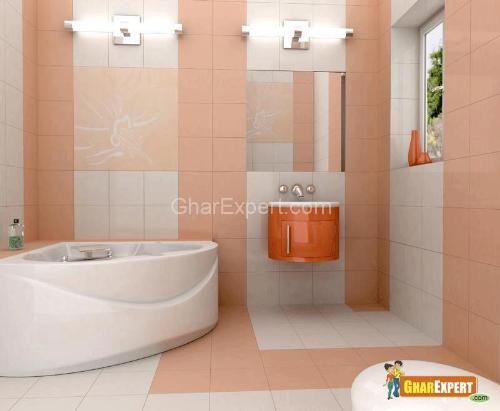 Use Task Lighting to Enlighten Particular Place in Kitchen
Use Task Lighting to Enlighten Particular Place in Kitchen 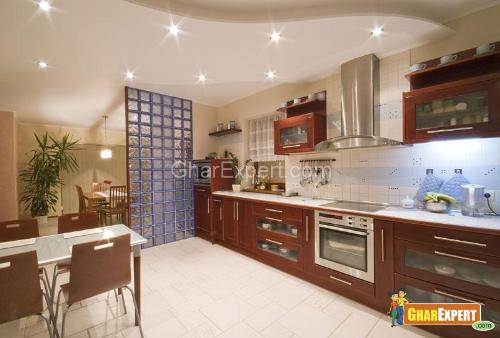
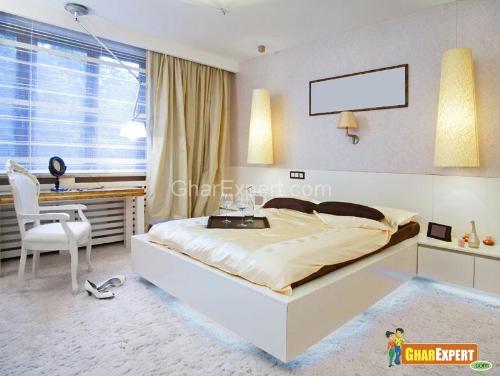
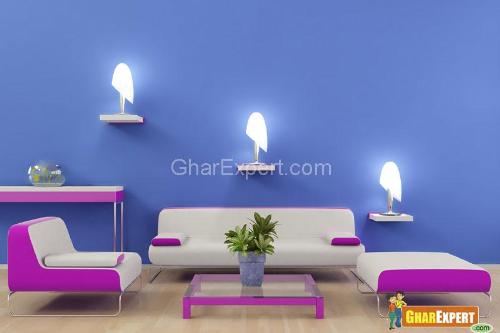
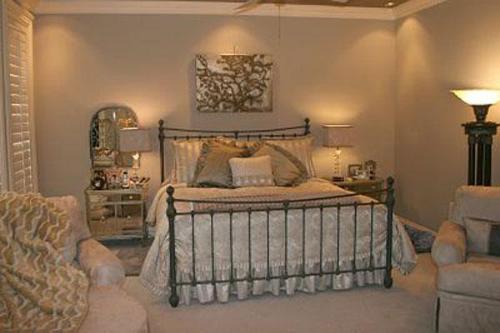








 Rocker Style Light Switch
Rocker Style Light Switch  Compact Fluorescent Lamp
Compact Fluorescent Lamp 
